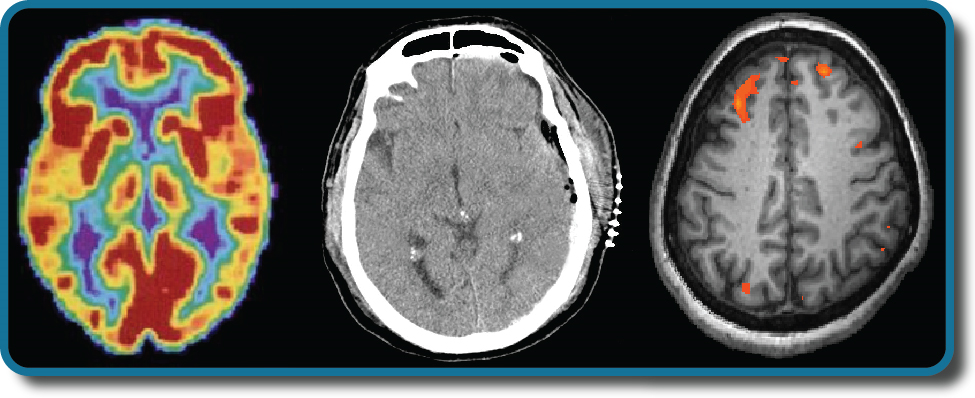3.1: مقدمة لعلم النفس البيولوجي
- Page ID
- 198159
أهداف التعلم
- اشرح الآليات البيولوجية التي تكمن وراء السلوك

هل سبق لك تفكيك جهاز لمعرفة كيفية عمله؟ لقد فعل الكثير منا ذلك، سواء لمحاولة الإصلاح أو لمجرد إرضاء فضولنا. غالبًا ما تختلف الأعمال الداخلية للجهاز عن واجهة المستخدم الخاصة به من الخارج. على سبيل المثال، لا نفكر في الرقائق الدقيقة والدوائر عندما نرفع مستوى الصوت على الهاتف المحمول؛ بدلاً من ذلك، نفكر في الحصول على مستوى الصوت بشكل صحيح. وبالمثل، غالبًا ما تختلف الأعمال الداخلية لجسم الإنسان عن التعبير الخارجي عن تلك الأعمال. إن مهمة علماء النفس هي إيجاد العلاقة بين هذه الأمور - على سبيل المثال، لمعرفة كيف تصبح عمليات إطلاق ملايين الخلايا العصبية فكرة.
يسعى هذا الفصل لشرح الآليات البيولوجية التي تكمن وراء السلوك. هذه الأسس الفسيولوجية والتشريحية هي الأساس للعديد من مجالات علم النفس. في هذا الفصل، سوف تتعلم كيف تؤثر الوراثة على كل من الصفات الفسيولوجية والنفسية. سوف تتعرف على بنية ووظيفة الجهاز العصبي. وأخيرًا، ستتعلم كيف يتفاعل الجهاز العصبي مع نظام الغدد الصماء.
References
Arnst, C. (2003, November). Commentary: Getting rational about health-care rationing. Bloomberg Businessweek Magazine. Retrieved from http://www.businessweek.com/stories/...care-rationing
Berridge, K. C., & Robinson, T. E. (1998). What is the role of dopamine in reward: Hedonic impact, reward learning, or incentive salience? Brain Research Reviews, 28, 309–369.
Chandola, T., Brunner, E., & Marmot, M. (2006). Chronic stress at work and the metabolic syndrome: A prospective study. BMJ, 332, 521–524.
Comings, D. E., Gonzales, N., Saucier, G., Johnson, J. P., & MacMurray, J. P. (2000). The DRD4 gene and the spiritual transcendence scale of the character temperament index. Psychiatric Genetics, 10, 185–189.
Confer, J. C., Easton, J. A., Fleischman, D. S., Goetz, C. D., Lewis, D. M. G, Perilloux, C., & Buss, D. M. (2010). Evolutionary psychology: Controversies, questions, prospects, and limitations. American Psychologist, 65, 110–126.
Gaines, C. (2013, August). An A-Rod suspension would save the Yankees as much as $37.5 million in 2014 alone. Business Insider. Retrieved from www.businessinsider.com/an-a-...in-2014-2013-8
Gardner, E. L. (2011). Addiction and brain reward and antireward pathways. Advances in Psychosomatic Medicine, 30, 22–60.
George, O., Le Moal, M., & Koob, G. F. (2012). Allostasis and addiction: Role of the dopamine and corticotropin-releasing factor systems. Physiology & Behavior, 106, 58–64.
Glaser, R., & Kiecolt-Glaser, J. K. (2005). Stress-induced immune dysfunction: Implications for health. Nature Reviews Immunology, 5, 243–251.
Gong, L., Parikh, S., Rosenthal, P. J., & Greenhouse, B. (2013). Biochemical and immunological mechanisms by which sickle cell trait protects against malaria. Malaria Journal. Advance online publication. doi:10.1186/1475-2875-12-317
Hardt, O., Einarsson, E. Ö., & Nader, K. (2010). A bridge over troubled water: Reconsolidation as a link between cognitive and neuroscientific memory research traditions. Annual Review of Psychology, 61, 141–167.
Macmillan, M. (1999). The Phineas Gage Information Page. Retrieved from http://www.uakron.edu/gage
March, J. S., Silva, S., Petrycki, S., Curry, J., Wells, K., Fairbank, J., … Severe, J. (2007). The treatment for adolescents with depression study (TADS): Long-term effectiveness and safety outcomes. Arch Gen Psychiatry, 64, 1132–1143.
Mustanski, B. S., DuPree, M. G., Nievergelt, C. M., Bocklandt, S., Schork, N. J., & Hamer, D. H. (2005). A genome wide scan of male sexual orientation. Human Genetics, 116, 272–278.
National Institute on Drug Abuse. (2001, July). Anabolic steroid abuse: What are the health consequences of steroid abuse? National Institutes of Health. Retrieved from www.drugabuse.gov/publication...-steroid-abuse
Squire, L. R. (2009). The legacy of patient H. M. for neuroscience. Neuron, 61, 6–9.
Tienari, P., Wynne, L. C., Sorri, A., et al. (2004). Genotype–environment interaction in schizophrenia spectrum disorder: long-term follow-up study of Finnish adoptees. British Journal of Psychiatry, 184, 216–222.
University of Utah Genetic Science Learning Center. (n.d.). What are genetic disorders? Retrieved from learn.genetics.utah.edu/conte...ers/whataregd/


